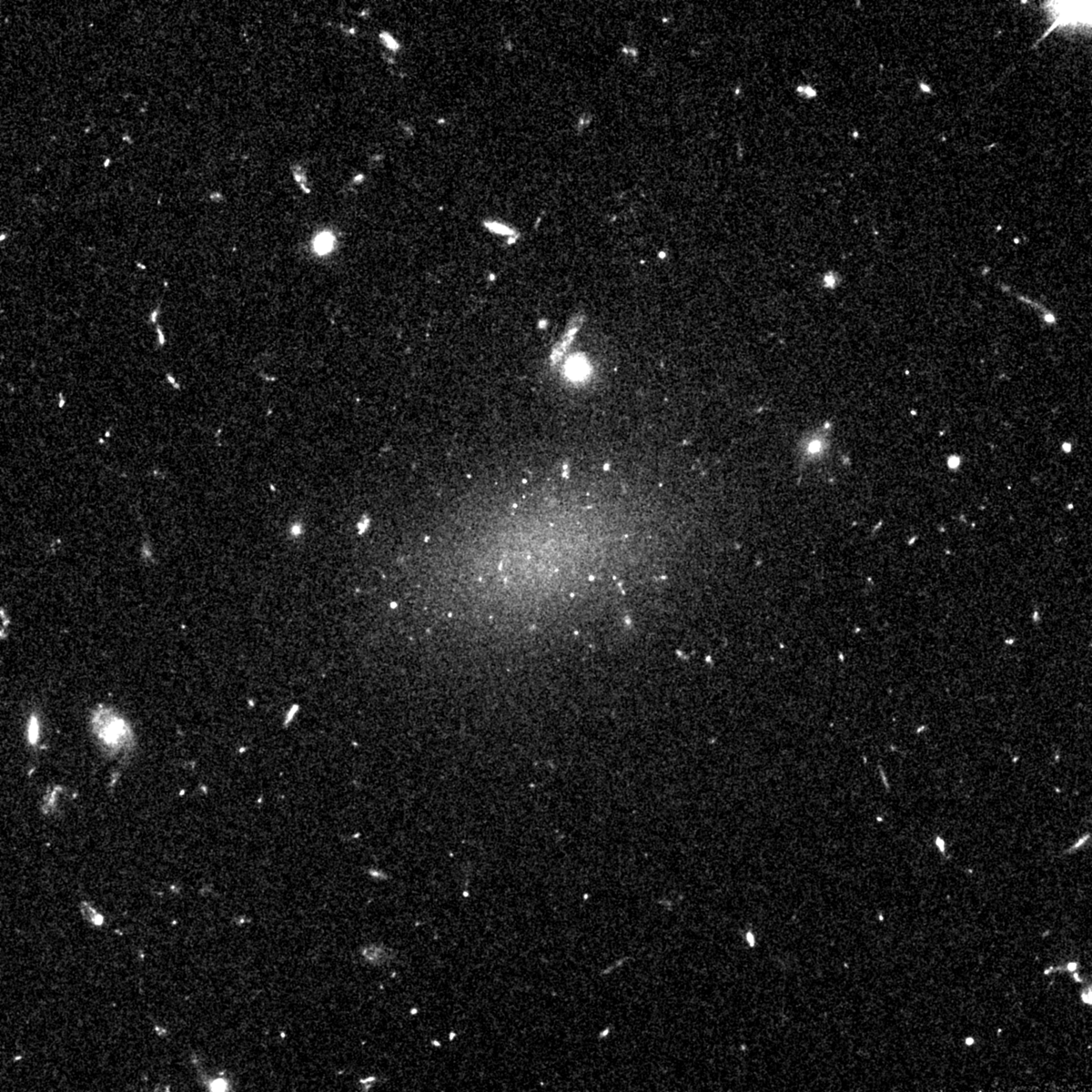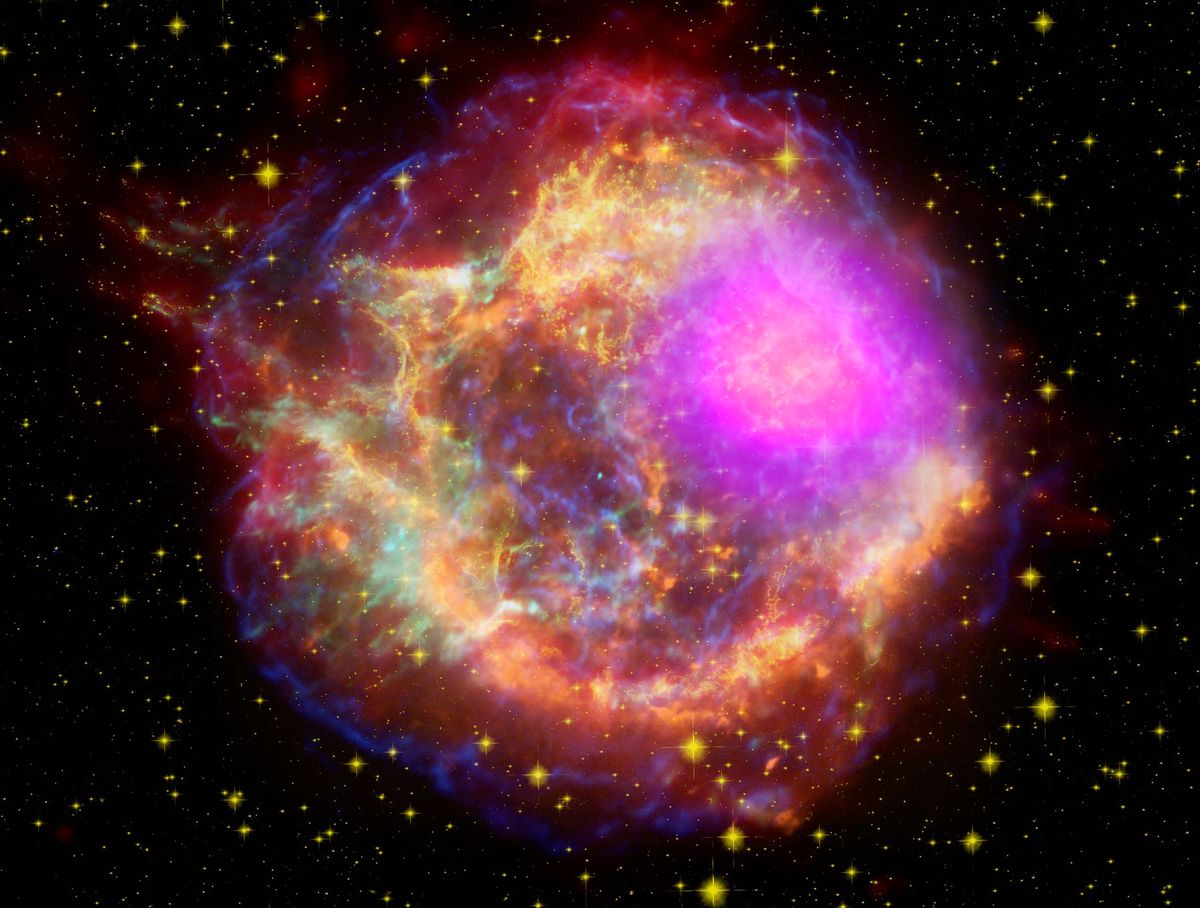Here is one for all the dark matter freaks out there:
According to Wikipedia, Dragonfly 44 is a galaxy which appears to be made up almost entirely of dark matter, with a mass approximating that of the Milky Way, or so the story goes. It is an extreme outlier as it appears, so far at least, to be the only one of its kind. A massive dark matter galaxy. If dark matter is so prevalent, shouldn't we see more galaxies like this, instead of just one? We have been looking in a lot of places. Not a cosmologist, so take it easy on me........
I am dying for an answer on this one! Maybe Dragonfly 44 is not a galaxy of dark matter, but simply some odd-ball. Stranger things have been known, maybe. Or not.
Dark matter is part of current Lambda-Cold Dark Matter [LCDM] cosmology, it says so in the name. Dark matter is crucial to star and galaxy formation, else we wouldn't see much of it, since non-dark matter wouldn't suffice to clump itself. So the generic, average result is that those two are seen together in galaxies as a whole.
There are differences between the two types of matter obviously, and one famous consequence is that galaxy collisions may separate the two (since non-dark matter likes to interact and will tend to lump easier).
[
https://en.wikipedia.org/wiki/Bullet_Cluster ]
"Because we've never directly detected whatever particle might be responsible for it, many people — experts and laypersons alike — remain skeptical of its existence. But if our Universe didn't have any dark matter, it would be a very different place. Here's how."
[Specifically on galaxies:]
"On larger cosmic scales, there would be dramatically less structure overall. In a Universe without dark matter, there is no unseen "skeleton" to the cosmic web; instead, structure forms based on the strength of normal matter alone. This means that instead of a cosmic web, where you wind up with galaxies dotting the filaments that connect the great clusters of the Universe together, you'd just wind up with isolated islands of mid-sized galaxies, with not much else.
Sure, some galaxies would still group and cluster together, but there would be far less of them that do so in a Universe without dark matter."
[
https://www.forbes.com/sites/starts...y-different-without-dark-matter/#17f6b10237ea ]
"We can tell that dark matter exists and even infer some of its properties by observing how it affects the matter and light we can observe, particularly in large-scale astrophysical environments. But the fact that dark matter has eluded direct, laboratory detection thus far means that a number of its properties remain open questions. Here are five things we know about dark matter, along with five that we don't, as we probe the limits of our scientific frontiers."
"4.) Dark matter's effects are most dominant, on average, in the smallest galaxies of all.
This one's a little bit counterintuitive, but has been observationally validated practically everywhere we look. Under the laws of gravitation, all forms of matter are treated equally. But the other forces, like nuclear and electromagnetic forces, only affect normal matter. When a large burst of star formation takes place in a galaxy, all of that radiation simply passes through the dark matter, but it can collide with and be absorbed by the normal matter.
This means that if your galaxy is low enough in mass overall, that normal matter can be expelled by intense episodes of star formation. The smaller and lower-in-mass your galaxy is, the greater the amount of normal matter that will be expelled, while all the dark matter will remain. In the most striking examples of all, dwarf galaxies Segue 1 and Segue 3, both satellites of the Milky Way, contain only a few hundred stars, but some 600,000 solar masses of material overall. The dark matter-to-normal matter ratio is approximately 1000-to-1, as opposed to 5-to-1 in most large-scale structures."
[
https://www.forbes.com/sites/starts...about-dark-matter-and-5-we-dont/#784841a736f8 ]





